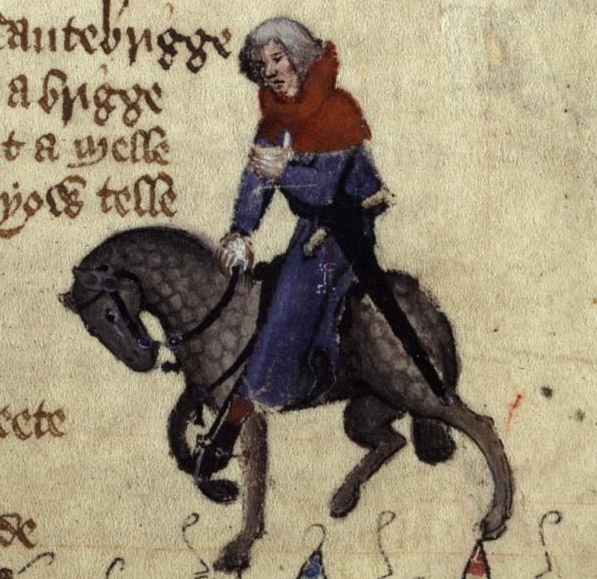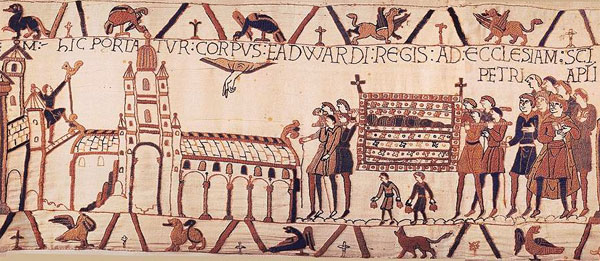|
Beverley Minster
Beverley Minster, otherwise known as the Parish Church of Saint John and Saint Martin, in Beverley, East Riding of Yorkshire, is a parish church in the Church of England. It is one of the largest parish churches in the UK, larger than one-third of all English cathedrals and regarded as a Gothic masterpiece by many. Originally a collegiate church, it was not selected as a bishop's seat during the Dissolution of the Monasteries; nevertheless, it survived as a parish church and the chapter house and the attached church of St Martin were the only major parts of the building to be lost. It is part of the Greater Churches Group and a Grade I listed building. History The minster owes its origin and much of its subsequent importance to Saint John of Beverley, Bishop of York (706–714?), who founded a monastery locally and whose remains still lie in a vault beneath the nave. Archaeological excavations in 1979–82 confirmed that a major church stood on or near the present minster ... [...More Info...] [...Related Items...] OR: [Wikipedia] [Google] [Baidu] |
Church Of England
The Church of England (C of E) is the established Christian church in England and the mother church of the international Anglican Communion. It traces its history to the Christian church recorded as existing in the Roman province of Britain by the 3rd century and to the 6th-century Gregorian mission to Kent led by Augustine of Canterbury. The English church renounced papal authority in 1534 when Henry VIII failed to secure a papal annulment of his marriage to Catherine of Aragon. The English Reformation accelerated under Edward VI's regents, before a brief restoration of papal authority under Queen Mary I and King Philip. The Act of Supremacy 1558 renewed the breach, and the Elizabethan Settlement charted a course enabling the English church to describe itself as both Reformed and Catholic. In the earlier phase of the English Reformation there were both Roman Catholic martyrs and radical Protestant martyrs. The later phases saw the Penal Laws p ... [...More Info...] [...Related Items...] OR: [Wikipedia] [Google] [Baidu] |
Bishop Of York
The archbishop of York is a senior bishop in the Church of England, second only to the archbishop of Canterbury. The archbishop is the diocesan bishop of the Diocese of York and the metropolitan bishop of the province of York, which covers the northern regions of England (north of the Trent) as well as the Isle of Man. The archbishop's throne ('' cathedra'') is in York Minster in central York and the official residence is Bishopthorpe Palace in the village of Bishopthorpe outside York. The current archbishop is Stephen Cottrell, since the confirmation of his election on 9 July 2020. History Roman There was a bishop in Eboracum (Roman York) from very early times; during the Middle Ages, it was thought to have been one of the dioceses established by the legendary King Lucius. Bishops of York are known to have been present at the councils of Arles ( Eborius) and Nicaea (unnamed). However, this early Christian community was later destroyed by the pagan Anglo-Sa ... [...More Info...] [...Related Items...] OR: [Wikipedia] [Google] [Baidu] |
Henry III Of England
Henry III (1 October 1207 – 16 November 1272), also known as Henry of Winchester, was King of England, Lord of Ireland, and Duke of Aquitaine from 1216 until his death in 1272. The son of King John and Isabella of Angoulême, Henry assumed the throne when he was only nine in the middle of the First Barons' War. Cardinal Guala Bicchieri declared the war against the rebel barons to be a religious crusade and Henry's forces, led by William Marshal, defeated the rebels at the battles of Lincoln and Sandwich in 1217. Henry promised to abide by the Great Charter of 1225, a later version of the 1215 '' Magna Carta'', which limited royal power and protected the rights of the major barons. His early rule was dominated first by Hubert de Burgh and then Peter des Roches, who re-established royal authority after the war. In 1230, the King attempted to reconquer the provinces of France that had once belonged to his father, but the invasion was a debacle. A revolt led by ... [...More Info...] [...Related Items...] OR: [Wikipedia] [Google] [Baidu] |
Provost Of Beverley Minster
Beverley Minster The Provost of St John's, Beverley (Beverley Minster) is a position said to have been created by Archbishop Thomas of Bayeux (1070–1100). The provost had responsibility for the administration of the lands owned by the minster and for the general revenues of the chapter. He was an external officer with authority in the government of the church, but with no stall in the choir and no vote in chapter. Most of the provosts of Beverley were appointed as a reward for their work as civil servants. The post was finally terminated during the Reformation. List of Provosts *Source:Durham University e-theses except when otherwise stated. * 1092–1109: Thomas (afterwards Archbishop of York, 1109–1114) * 1109-: Robert * c.1132: Thomas (Normannus) * c.1135: Robert * c.1141–1152: Thurstan * c.1153–1154: Roger de Pont L'Évêque * 1154–1162: Thomas Becket (afterwards Archbishop of Canterbury, 1162–1170) * by 1169–1177: Geoffrey BarlowPont l'Évêque, Roger de ... [...More Info...] [...Related Items...] OR: [Wikipedia] [Google] [Baidu] |
Thomas Becket
Thomas Becket (), also known as Saint Thomas of Canterbury, Thomas of London and later Thomas à Becket (21 December 1119 or 1120 – 29 December 1170), was an English nobleman who served as Lord Chancellor from 1155 to 1162, and then notably as Archbishop of Canterbury from 1162 until his murder in 1170. He is venerated as a saint and martyr by the Catholic Church and the Anglican Communion. He engaged in conflict with Henry II, King of England, over the rights and privileges of the Church and was murdered by followers of the king in Canterbury Cathedral. Soon after his death, he was canonised by Pope Alexander III. Sources The main sources for the life of Becket are a number of biographies written by contemporaries. A few of these documents are by unknown writers, although traditional historiography has given them names. The known biographers are John of Salisbury, Edward Grim, Benedict of Peterborough, William of Canterbury, William fitzStephen, Guernes of ... [...More Info...] [...Related Items...] OR: [Wikipedia] [Google] [Baidu] |
Catholic Priest
The priesthood is the office of the ministers of religion, who have been commissioned (" ordained") with the Holy orders of the Catholic Church. Technically, bishops are a priestly order as well; however, in layman's terms ''priest'' refers only to presbyters and pastors (parish priests). The church's doctrine also sometimes refers to all baptised (lay) members as the "common priesthood", which can be confused with the ministerial priesthood of the consecrated clergy. The church has different rules for priests in the Latin Church–the largest Catholic particular church–and in the 23 Eastern Catholic Churches. Notably, priests in the Latin Church must take a vow of celibacy, whereas most Eastern Catholic Churches permit married men to be ordained. Deacons are male and usually belong to the diocesan clergy, but, unlike almost all Latin Church (Western Catholic) priests and all bishops from Eastern or Western Catholicism, they may marry as laymen before their ordination as cl ... [...More Info...] [...Related Items...] OR: [Wikipedia] [Google] [Baidu] |
Archbishop Of York
The archbishop of York is a senior bishop in the Church of England, second only to the archbishop of Canterbury. The archbishop is the diocesan bishop of the Diocese of York and the metropolitan bishop of the province of York, which covers the northern regions of England (north of the Trent) as well as the Isle of Man. The archbishop's throne (''cathedra'') is in York Minster in central York and the official residence is Bishopthorpe Palace in the village of Bishopthorpe outside York. The current archbishop is Stephen Cottrell, since the confirmation of his election on 9 July 2020. History Roman There was a bishop in Eboracum (Roman York) from very early times; during the Middle Ages, it was thought to have been one of the dioceses established by the legendary King Lucius. Bishops of York are known to have been present at the councils of Arles (Eborius) and Nicaea (unnamed). However, this early Christian community was later destroyed by the pagan Anglo-Saxon ... [...More Info...] [...Related Items...] OR: [Wikipedia] [Google] [Baidu] |
Reeve (England)
In Anglo-Saxon England, the reeve was a senior official with local responsibilities under the Crown, such as the chief magistrate of a town or district. After the Norman conquest, it was an office held by a man of lower rank, appointed as manager of a manor and overseer of the peasants. In this later role, historian H. R. Loyn observes, "he is the earliest English specialist in estate management." Anglo-Saxon England Before the Conquest, a reeve (Old English '' ġerēfa''; similar to the titles '' greve''/''gräfe'' in the Low Saxon languages of Northern Germany) was an administrative officer who generally ranked lower than the ealdorman or earl. The Old English word ''ġerēfa'' was originally a general term, but soon acquired a more technical meaning. Land was divided into a large number of hides—an area containing enough farmable land to support one household. Ten hides constituted a tithings, and the families living upon it (in theory, ten of them) were obliged to u ... [...More Info...] [...Related Items...] OR: [Wikipedia] [Google] [Baidu] |
William The Conqueror
William I; ang, WillelmI (Bates ''William the Conqueror'' p. 33– 9 September 1087), usually known as William the Conqueror and sometimes William the Bastard, was the first Norman king of England, reigning from 1066 until his death in 1087. A descendant of Rollo, he was Duke of Normandy from 1035 onward. By 1060, following a long struggle to establish his throne, his hold on Normandy was secure. In 1066, following the death of Edward the Confessor, William invaded England, leading an army of Normans to victory over the Anglo-Saxon forces of Harold Godwinson at the Battle of Hastings, and suppressed subsequent English revolts in what has become known as the Norman Conquest. The rest of his life was marked by struggles to consolidate his hold over England and his continental lands, and by difficulties with his eldest son, Robert Curthose. William was the son of the unmarried Duke Robert I of Normandy and his mistress Herleva. His illegitimate status and his youth ... [...More Info...] [...Related Items...] OR: [Wikipedia] [Google] [Baidu] |
Voussoir
A voussoir () is a wedge-shaped element, typically a stone, which is used in building an arch or vault. Although each unit in an arch or vault is a voussoir, two units are of distinct functional importance: the keystone and the springer. The keystone is the centre stone or masonry unit at the apex of an arch. The springer is the lowest voussoir on each side, located where the curve of the arch springs from the vertical support or abutment of the wall or pier. The keystone is often decorated or enlarged. An enlarged and sometimes slightly dropped keystone is often found in Mannerist arches of the 16th century, beginning with the works of Giulio Romano, who also began the fashion for using voussoirs above rectangular openings, rather than a lintel (Palazzo Stati Maccarani, Rome, circa 1522). The word is a stonemason's term borrowed in Middle English from French verbs connoting a "turn" ('' OED''). Each wedge-shaped voussoir ''turns aside'' the thrust of the mass abov ... [...More Info...] [...Related Items...] OR: [Wikipedia] [Google] [Baidu] |
Triforium
A triforium is an interior gallery, opening onto the tall central space of a building at an upper level. In a church, it opens onto the nave from above the side aisles; it may occur at the level of the clerestory windows, or it may be located as a separate level below the clerestory. Masonry triforia are generally vaulted and separated from the central space by arcades. Early triforia were often wide and spacious, but later ones tend to be shallow, within the thickness of an inner wall, and may be blind arcades not wide enough to walk along. The outer wall of the triforium may itself have windows (glazed or unglazed openings), or it may be solid stone. A narrow triforium may also be called a "blind-storey", and looks like a row of window frames. History ''Triforium'' is derived from the Latin ''tres'', ''tria'' "three", and ''foris'', "door, entrance"; its Greek equivalent is τρίθυρον, which originally referred to a building with three doors. The earliest examp ... [...More Info...] [...Related Items...] OR: [Wikipedia] [Google] [Baidu] |
Ealdred (archbishop Of York)
Ealdred (or Aldred; died 11 September 1069) was Abbot of Tavistock, Bishop of Worcester, and Archbishop of York in early medieval England. He was related to a number of other ecclesiastics of the period. After becoming a monk at the monastery at Winchester, he was appointed Abbot of Tavistock Abbey in around 1027. In 1046 he was named to the Bishopric of Worcester. Ealdred, besides his episcopal duties, served Edward the Confessor, the King of England, as a diplomat and as a military leader. He worked to bring one of the king's relatives, Edward the Exile, back to England from Hungary to secure an heir for the childless king. In 1058 he undertook a pilgrimage to Jerusalem, the first bishop from England to do so.Barlow ''Edward the Confessor'' pp. 208–209 As administrator of the Diocese of Hereford, he was involved in fighting against the Welsh, suffering two defeats at the hands of raiders before securing a settlement with Gruffydd ap Llywelyn, a Welsh ruler. In 106 ... [...More Info...] [...Related Items...] OR: [Wikipedia] [Google] [Baidu] |







